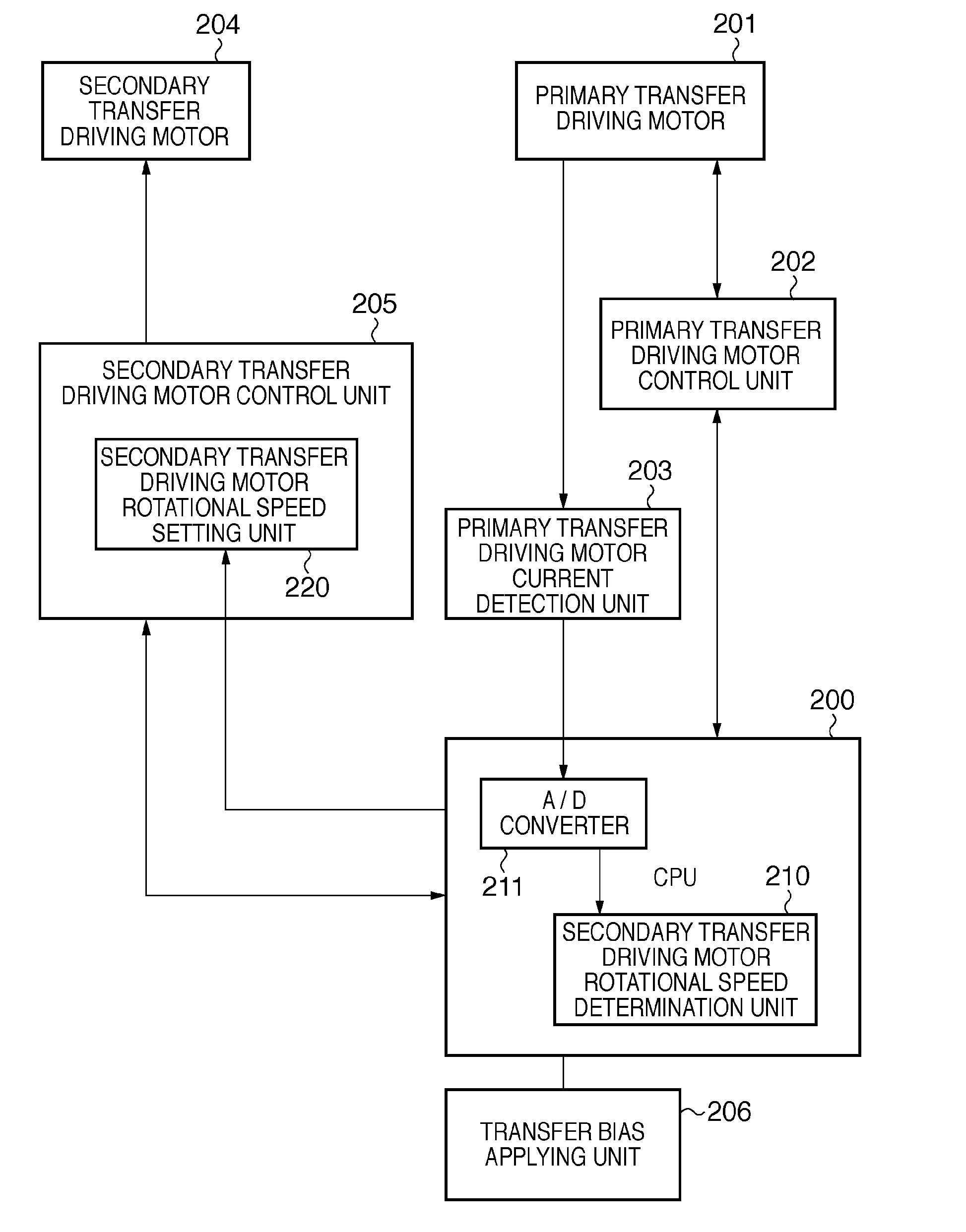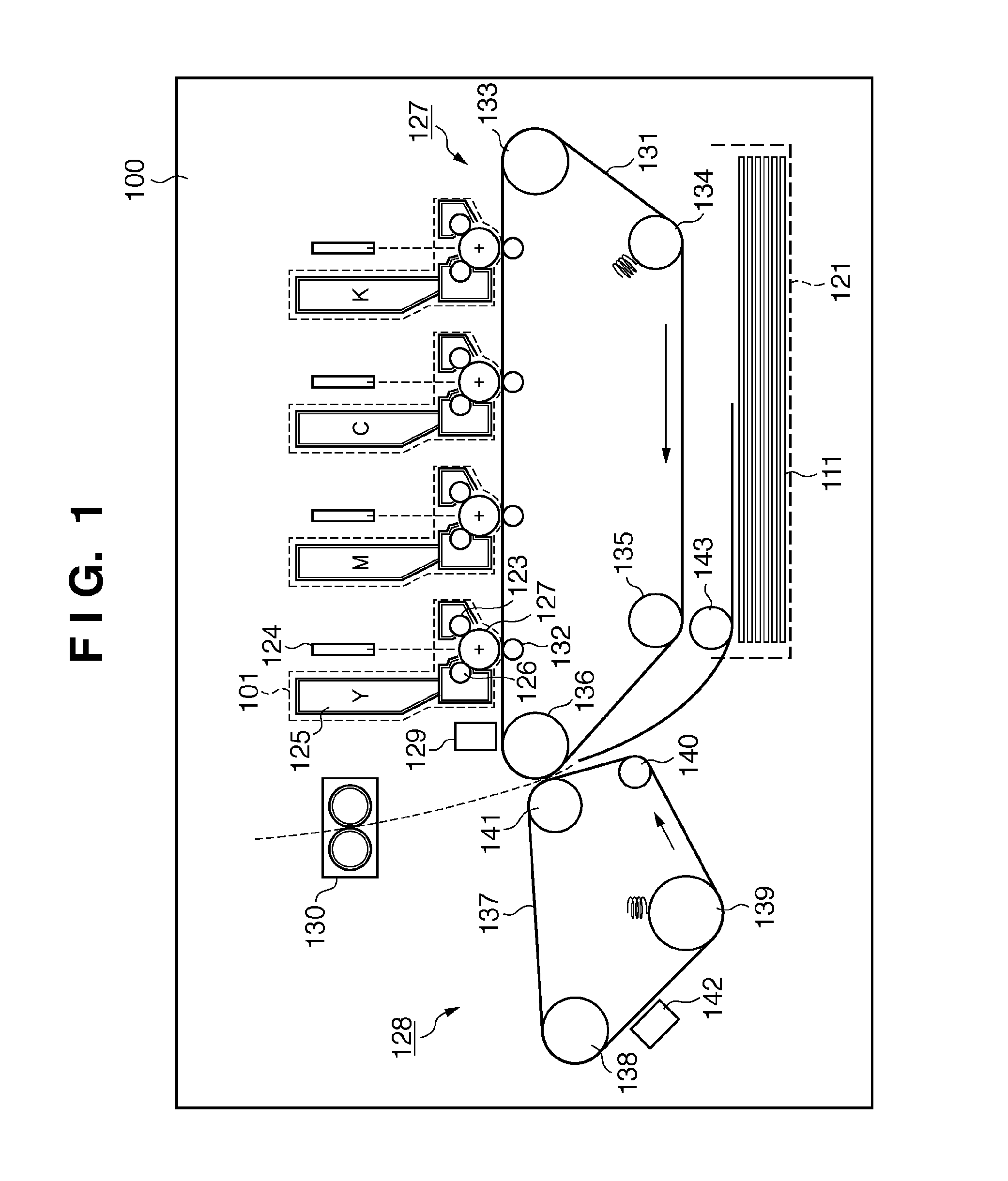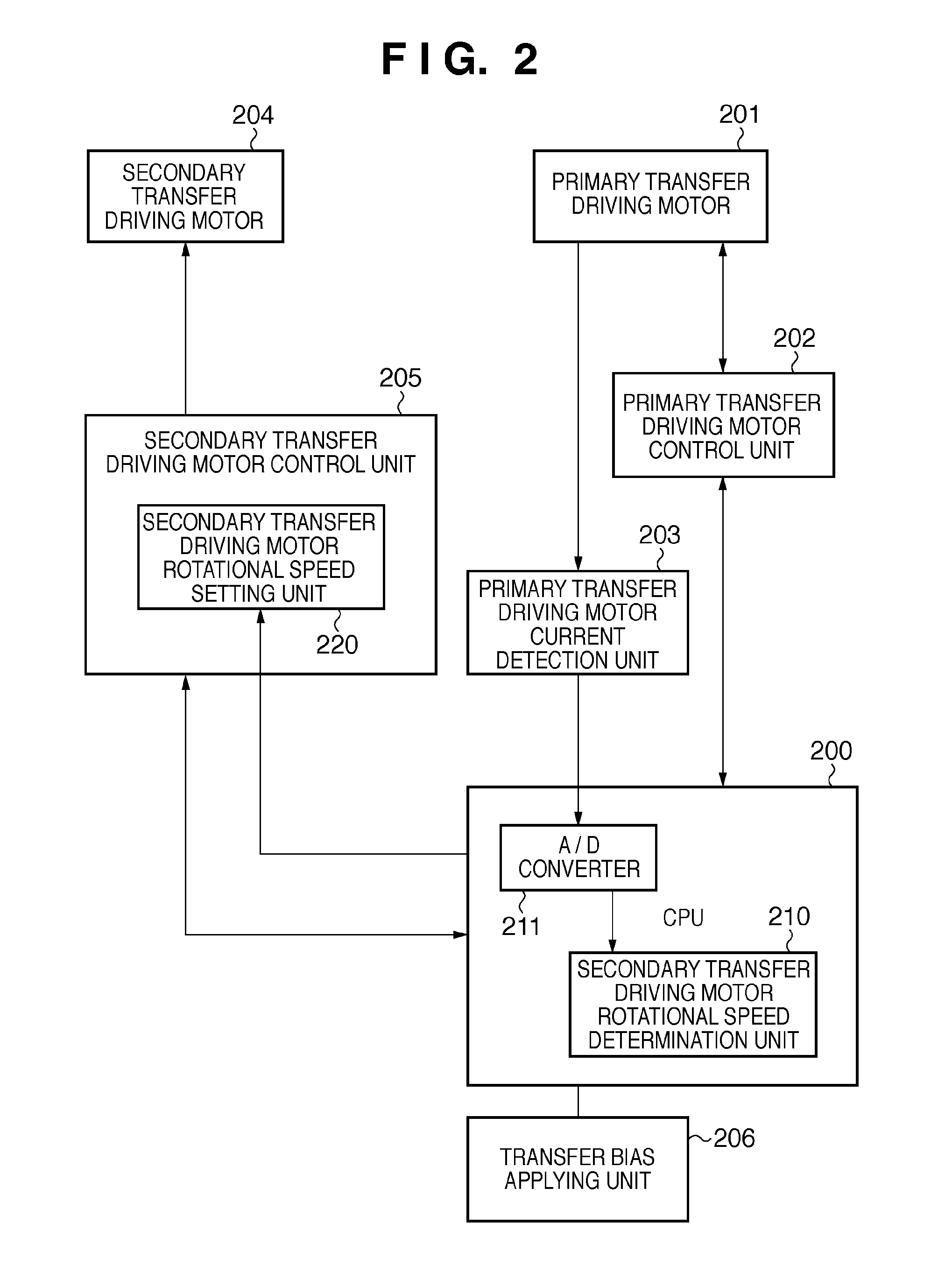Image forming apparatus using plurality of rotation members, and control method thereof
a technology of rotating members and forming apparatus, which is applied in the direction of electrographic process apparatus, instruments, optics, etc., can solve problems such as forming defective images
- Summary
- Abstract
- Description
- Claims
- Application Information
AI Technical Summary
Benefits of technology
Problems solved by technology
Method used
Image
Examples
first embodiment
[0046]FIG. 1 is a sectional view showing the schematic structure of an image forming apparatus. An image forming apparatus 100 forms an image using an electro-photographic process. Note that the image forming apparatus in the present invention may form an image using an electrostatic printing process or magnetic printing process. An example of the developer is toner formed from, for example, a heat fusible resin. Examples of the print medium are print paper, transfer sheet, OHT sheet, glossy paper, glossy film, electrofax paper, and electrostatic print paper. The image forming apparatus 100 forms a multicolor image using four, yellow (Y), magenta (M), cyan (C), and black (K) color toners. Note that the present invention is also applicable to a monochrome image forming apparatus.
[0047]The image forming apparatus 100 includes four cartridges 101. Each cartridge 101 includes a photosensitive member 122, charging sleeve 123, toner container 125, and developing sleeve 126. The photosensi...
second embodiment
[0083]The second embodiment will describe an invention in which, while applying a secondary transfer bias to a secondary transfer belt 137, the current value of a primary transfer driving motor 201 is detected to control the target rotational speed of a secondary transfer driving motor 204.
[0084]FIGS. 8A and 8B are flowcharts showing a control sequence executed by a CPU 200. The same reference symbols as those in FIG. 6 denote the same processes to simplify the description. In FIG. 8A, S801 is inserted between S605 and S606 in FIG. 6. Also, S802 to S809 replace S616.
[0085]In S801, the CPU 200 instructs a bias applying unit 206 to apply the secondary transfer bias. In response to this, the bias applying unit 206 starts applying the secondary transfer bias. The secondary transfer bias is positive when transferring a toner image from a primary transfer belt 131 onto a print sheet 111, and negative in cleaning. In S801, a positive bias is applied. In S606, the current of the primary tra...
third embodiment
[0093]In the first or second embodiment, the rotational speed of the secondary transfer driving motor 204 is controlled by detecting the current value of the primary transfer driving motor 201. However, when the motor current of the secondary transfer driving motor 204 draws a linear characteristic with respect to the load, the rotational speed of the secondary transfer driving motor 204 can be controlled by detecting the current value of the secondary transfer driving motor 204. A method of controlling the rotational speed of the secondary transfer driving motor 204 by detecting the current value of the secondary transfer driving motor 204 is applicable to both the first and second embodiments, and an application to the first embodiment will be explained below.
[0094]FIG. 10 is a block diagram showing the control circuit of an image forming apparatus according to the third embodiment. The same reference numerals as those in FIG. 2 denote the same parts, and a description thereof wil...
PUM
 Login to View More
Login to View More Abstract
Description
Claims
Application Information
 Login to View More
Login to View More - R&D
- Intellectual Property
- Life Sciences
- Materials
- Tech Scout
- Unparalleled Data Quality
- Higher Quality Content
- 60% Fewer Hallucinations
Browse by: Latest US Patents, China's latest patents, Technical Efficacy Thesaurus, Application Domain, Technology Topic, Popular Technical Reports.
© 2025 PatSnap. All rights reserved.Legal|Privacy policy|Modern Slavery Act Transparency Statement|Sitemap|About US| Contact US: help@patsnap.com



